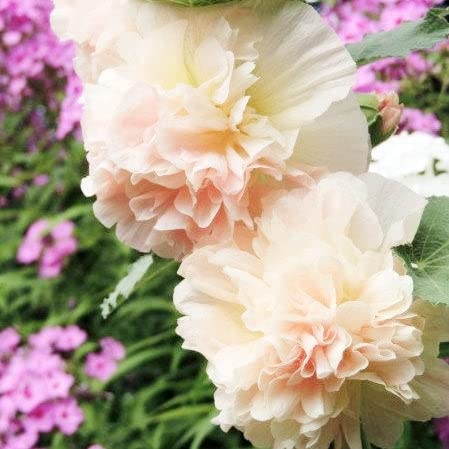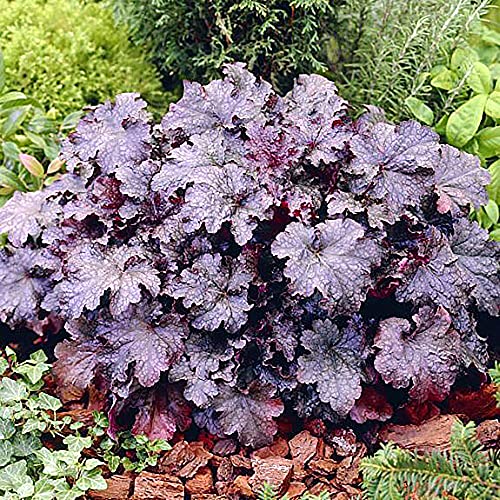Black eyed Susans (also know as Rudbeckia) is one of my absolute favorite flowers for adding that a punch of golden color to a garden. Those signature black-eyed blooms just stand out against everything else. But not every plant plays nicely with them.
I learned this one summer when half my rudbeckia bed looked stressed and stunted while the other half thrived. The difference? What I had planted alongside them. Some plants just don’t make good neighbors for black-eyed Susans, and knowing which ones to avoid can save you a lot of headaches (and dead plants).
Understanding Rudbeckia
Rudbeckia (commonly known as black-eyed Susan) is that gorgeous daisy-like perennial with bright yellow-orange petals and a distinctive dark center. They’re hardy, drought-resistant and absolutely stunning when they bloom from mid-summer into fall. I’ve got several varieties in my garden and they’re alwaya so eye catching come August.
But rudbeckia has specific growing preferences that don’t always mesh well with other garden favorites. They have moderately deep root systems that can compete with neighboring plants for water and nutrients. They also prefer well draining soil that doesn’t stay soggy as it can conflict with more moisture-loving plants.
Getting companion planting wrong with rudbeckia can lead to all sorts of problems – stunted growth, fewer blooms increased disease susceptibility, and in worst cases, completely failed plants.
What makes rudbeckia tricky is that while they’re relatively easy to grow, they can be particular about their garden companions. Some plants will crowd them out, others will shade them too much, and some just have incompatible growing needs.
So let’s look at which plants you should definitely keep away from your beautiful black-eyed Susans.
Plants to Avoid Planting with Rudbeckia
1. Aggressive Mint Varieties
Trust me on this one – keep mint far away from your rudbeckia. All varieties of mint have invasive root systems that will quickly take over a garden bed. I made this mistake in my side garden and watched in horror as the mint literally choked out my beautiful ‘Goldsturm’ rudbeckia.
Mint spreads through underground runners and will compete fiercely for nutrients and space. Even when contained in pots, mint can escape and cause havoc among your rudbeckia. If you want both in your garden keep the mint in containers well away from your black-eyed Susans.
2. Tall Plants That Cast Shadows
Rudbeckia absolutely loves the sun – they need at least 6 hours of direct sunlight daily to thrive. Plants like sunflowers, tall dahlias or hollyhocks might seem like good companions since they’re also sun-lovers, but their height can seriously shade your rudbeckia.
Last season I planted some gorgeous ‘Indian Summer’ rudbeckia near a row of sunflowers, thinking they’d look stunning together. By mid-July, the sunflowers were casting so much shade that my rudbeckia started stretching awkwardly, trying to reach more light. The blooms were smaller and fewer, and the whole plant looked leggy and unhappy.
3. Thirsty Hydrangeas
Hydrangeas are gorgeous, don’t get me wrong. But they’re water hogs compared to the more drought-tolerant rudbeckia. When I planted a hydrangea near my black-eyed Susans a few years back I kept having to choose between a thirsty hydrangea or overwatered rudbeckia.
The conflicting water needs meant I could never get it right – either the hydrangea looked wilted or the rudbeckia roots stayed too wet, eventually leading to some root rot issues. These plants just have fundamentally different needs when it comes to moisture.
4. Aggressive Climbing Vines
Morning glories, honeysuckle & other climbing vines might seem like nice vertical elements to add near rudbeckia, but watch out! These vigorous climbers can quickly use your rudbeckia as living trellises, weighing them down and sometimes even breaking stems.
5. Shallow-Rooted Annuals
Those flats of colorful annual bedding plants might be tempting to use as fillers around your rudbeckia but many shallow-rooted annuals like impatiens or begonias have watering needs that clash with rudbeckia’s preferences.
They need frequent, shallow watering that can keep the soil surface too moist for rudbeckia’s liking. I’ve found that this constant surface moisture can lead to fungal issues on the lower leaves of black-eyed Susans.
6. Hosta and Other Shade-Lovers
This might seem obvious but I’ve seen people try to mix sun and shade plants too often. Hostas, heucheras & other shade-preferring plants will struggle alongside sun-loving rudbeckia. You’ll end up with stressed plants on both sides of the equation.
In my first garden I stubbornly tried to make this combination work in a spot that got morning sun and afternoon shade. The result? Scorched hosta leaves and stretched, sparse rudbeckia. Sometimes you just can’t compromise.
7. Tomatoes and Potatoes
While it might be tempting to mix flowers and vegetables, tomatoes and potatoes can share diseases with rudbeckia. Both can be susceptible to similar fungal issues and planting them close together increases the chance of cross-contamination.
I once had a spectacular case of powdery mildew spread from my tomatoes to nearby rudbeckia in a matter of weeks. Since then I’ve kept my edibles and rudbeckia in separate areas of the garden.
8. Aggressive Self-Seeders
Plants like nigella (love-in-a-mist), California poppies or bachelor’s buttons are beautiful but can self-seed like crazy. While rudbeckia themselves can be aggressive self-seeders in some gardens, combining them with other prolific seeders creates a maintenance nightmare.
I once had a patch of California poppies near my rudbeckia, and the following spring was spent pulling hundreds of poppy seedlings from around the rudbeckia crowns. It was almost impossible to tell which tiny seedlings were which until they got bigger, making selective weeding a challenge.
9. Roses (Especially Disease-Prone Varieties)
This one might be controversial but I’ve found that roses and rudbeckia don’t make great neighbors. Roses are more susceptible to black spot & powdery mildew than rudbeckia. But once these fungal problems take hold, they can spread to your otherwise resistant black-eyed Susans.
Plus roses generally need more fertilizer and different soil conditions than rudbeckia prefers. The regular rose spraying and feeding schedule can end up affecting your rudbeckia in ways you didn’t intend.
10. Water-Loving Irises
Bearded irises are stunning spring bloomers but they prefer more consistent moisture than rudbeckia. When planted too close, either the irises will suffer from too little water or the rudbeckia from too much.
I tried this combination in a border once, and the watering needs never aligned properly. The irises looked parched by mid-summer but increasing water led to yellowing rudbeckia leaves. Now I keep my moisture-loving plants in a separate bed.
11. Rhododendrons and Azaleas
These acid-loving shrubs have soil requirements that clash dramatically with rudbeckia’s preferences. Black-eyed Susans prefer neutral to slightly alkaline soil while rhododendrons and azaleas need acidic conditions to thrive.
Any soil amendments you add for your acid-lovers will potentially stress your rudbeckia. I’ve seen this combination in gardens where neither plant looks particularly happy.
12. Plants with Similar Pest Problems
Asters, chrysanthemums and other daisy family members can attract the same pests that sometimes plague rudbeckia. While rudbeckia isn’t usually significantly affected by pests, planting them alongside other susceptible plants can increase the risk.
Aphids, in particular, seem to jump from asters to nearby rudbeckia in my garden. While not devastating, it’s something to consider when planning your beds.
13. Other Rudbeckia Varieties (Too Close)
This might sound strange but planting different rudbeckia varieties too close together can sometimes lead to problems. Some varieties are more vigorous than others & can outcompete their cousins. There’s also the potential for cross-pollination if you’re trying to save seeds from specific varieties.
I keep my rudbeckia varieties in separate garden areas to maintain their distinct characteristics and prevent the more aggressive types from overwhelming the more delicate varieties.
Good Companion Plants for Rudbeckia
Now that we know what not to plant these are some excellent companions that work really well with black-eyed Susans:
- Echinacea (Purple Coneflower) – Similar growing conditions and complementary colors
- Ornamental grasses like Switchgrass or Little Bluestem – Provide texture contrast
- Sedum ‘Autumn Joy’ – Fall-blooming with compatible water needs
- Russian Sage – The purple-blue flowers look stunning with rudbeckia’s yellows
- Coreopsis – Similar growing conditions with complementary blooming periods
Tips for Successful Companion Planting
- Consider mature plant sizes and spacing – rudbeckia needs good air circulation
- Group plants with similar watering needs – drought-tolerant plants generally work best
- Plan for continuous blooms by choosing companions with different flowering periods
- Use color theory – purples, blues, and whites create stunning contrasts with rudbeckia’s yellows
- Monitor for signs of competition and be ready to intervene if one plant starts to dominate
Final Thoughts
Creating a successful garden is all about understanding which plants play well together and which ones just can’t get along.
I’ve killed more plants than I care to admit by ignoring companion planting principles.
And I always try to remember that every garden is unique – your soil, climate and specific conditions might allow for combinations that wouldn’t work elsewhere. The key is observation and adaptation. Watch how your plants interact and don’t be afraid to move things around if they’re not thriving.





